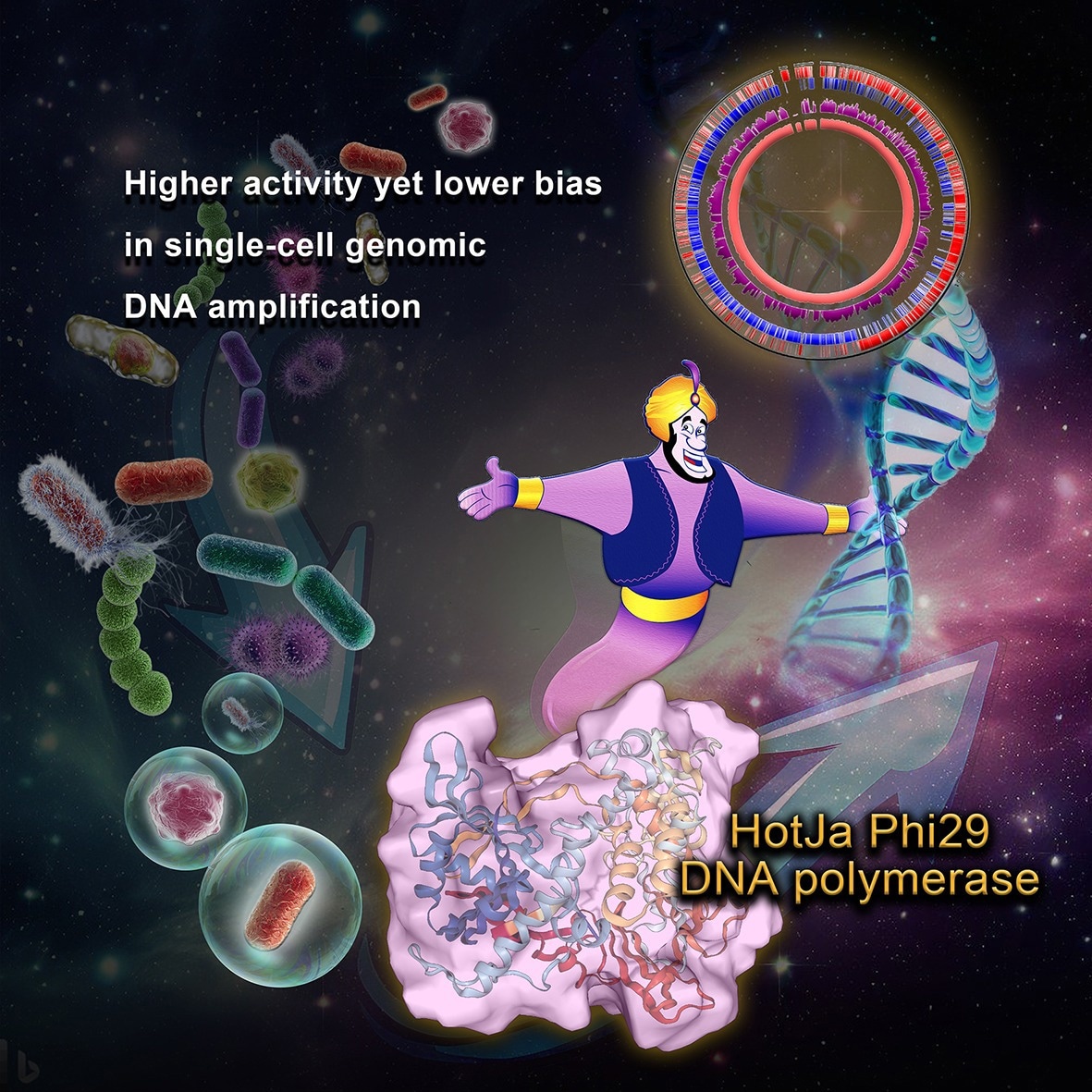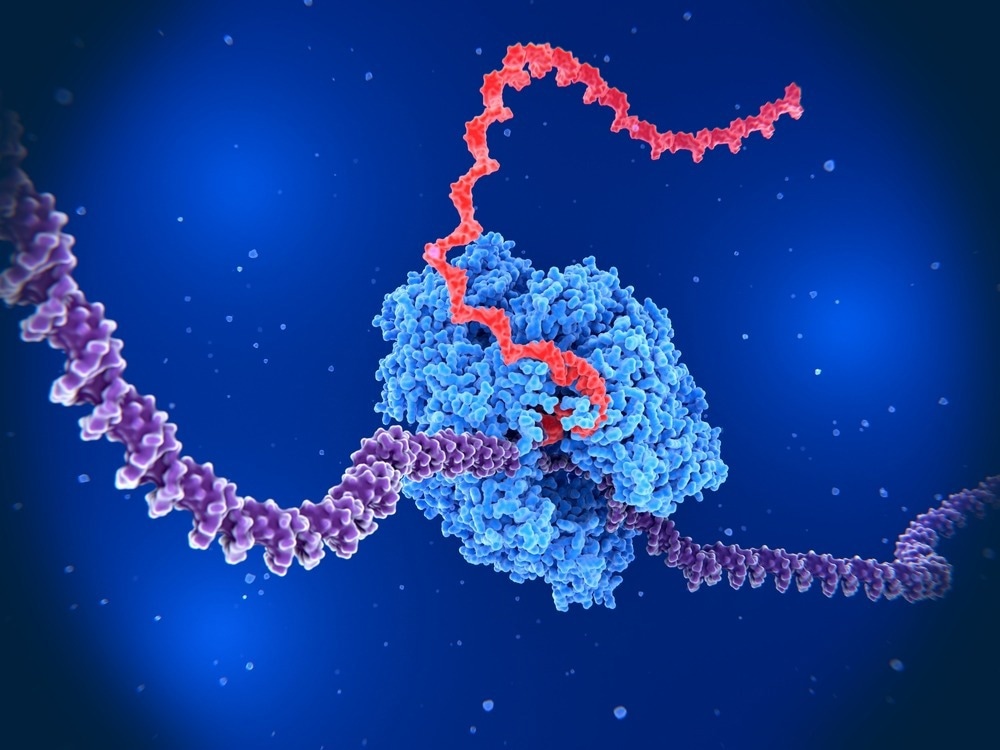Reviewed by Danielle Ellis, B.Sc.Jul 25 2023
It has long been technically difficult to sequence the genome of a single bacterial cell due to the nearly impossible bias in the gene amplification stage of the process, making it difficult to produce a high-coverage genome sequence from precisely one bacterial cell.
 Improved single-cell genome amplification by a high-efficiency HotJa Phi29 DNA polymerase. Image Credit: Yang Liu
Improved single-cell genome amplification by a high-efficiency HotJa Phi29 DNA polymerase. Image Credit: Yang Liu
However, a new method devised at the Chinese Academy of Sciences’ (CAS) Single-Cell Center, Qingdao Institute of Bioenergy and Bioprocess Technology (QIBEBT) drastically reduces that bias, opening up entirely new horizons of single-cell research.
On June 29th, 2023, the study was published in Frontiers in Bioengineering and Biotechnology.
When using conventional gene sequencing techniques, using millions of cells at once is normal. However, such bulk cell sequencing inevitably eliminates cell differences, making it challenging to investigate relationships among various cell lineages or carry out any other type of research that requires consideration of a single cell at a time.
Since bacterial cells are so tiny and have much lower DNA contents than human or animal cells, these technological obstacles are extremely severe for bacteria.
DNA must first be “amplified” to perform gene or entire genome sequencing. Gene amplification, also known as “molecular photocopying,” can duplicate DNA fragments millions or even billions of times.

Image Credit: Juan Gaertner/Shutterstock.com
Bulk gene sequencing encounters few issues with amplification. The amount of DNA that can be copied is extremely limited in bacterial single-cell DNA amplification, especially for whole genomes, and the amplification process can introduce biases that over- or under-represent various regions of the genome.
Reducing amplification bias has been something of a holy grail for single-cell genome amplification researchers. And we think we've now found a way to tackle this problem.”
Jia Zhang, Study Lead Author and Biotechnologist, Single-Cell Center, Qingdao Institute of Bioenergy and Bioprocess Technology, Chinese Academy of Sciences
Improved Single-cell Genome Amplification (iSGA) is a method that the researchers created. It mainly entails process and protein engineering to improve the phi29 DNA polymerase’s capacity for amplification. Although the phi29 DNA polymerase is frequently used in single-cell whole genome amplification, it has efficiency and low genome coverage issues.
The iSGA phi29 DNA polymerase we developed is more than twice as efficient and robust than the conventional phi29 DNA polymerase. It's also almost eleven times cheaper than the main commonly available commercial version.”
Jia Zhang, Study Lead Author and Biotechnologist, Single-Cell Center, Qingdao Institute of Bioenergy and Bioprocess Technology, Chinese Academy of Sciences
The scientists did this by modifying the polymerase to increase its capacity for amplification. They altered the structure of the phi29 DNA polymerase through a process known as compartmentalized self-replication (CSR) to improve its activity, specificity, and stability.
The newly developed DNA polymerase, what we called HotJa Phi29 DNA polymerase, shows significantly better genome coverage (99.75%) at a higher temperature (40 ℃) compared to existing commercial polymerases.”
Jian Xu, Study Senior Author and Professor, Single-Cell Center, Qingdao Institute of Bioenergy and Bioprocess Technology, Chinese Academy of Sciences
They also altered the amplification buffer (the solution that offers an excellent chemical environment for the DNA polymerase) and optimized the amplification reaction conditions to enhance the stability and activity of the phi29 DNA polymerase. In addition, to reduce contamination during the amplification process, the researchers developed a much more efficient decontamination method.
The investigators now intend to optimize their iSGA method and HotJa Phi29 DNA polymerase across a variety of applications and sample types, to further reduce costs. The team has created a suite of tools for the functional sorting of microbial single cells, including RACS-Seq, FlowRACS, and EasySort.
By developing these instruments and reagents, they hope to enable microbiologists to sort and sequence any individual microbial cell on the planet without regard for data quality or reagent cost.
Source:
Journal reference:
Zhang, J., et al. (2023). Improved single-cell genome amplification by a high-efficiency phi29 DNA polymerase. Frontiers in Bioengineering and Biotechnology. doi.org/10.3389/fbioe.2023.1233856.